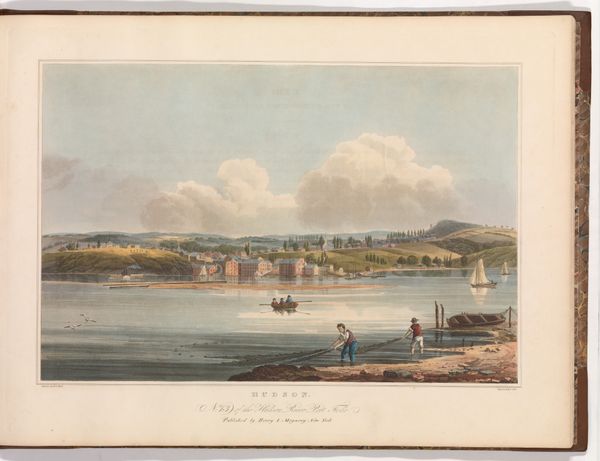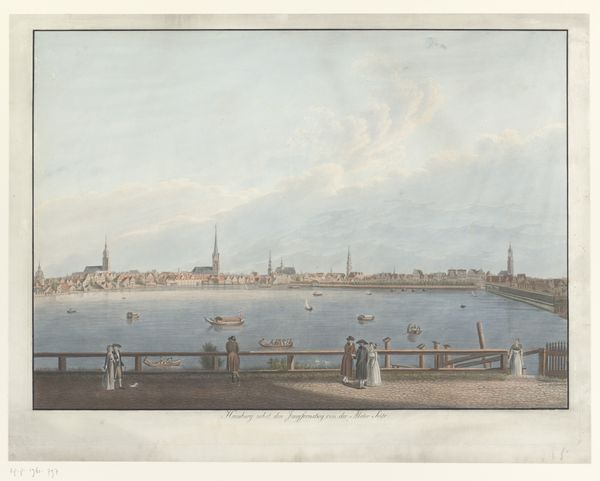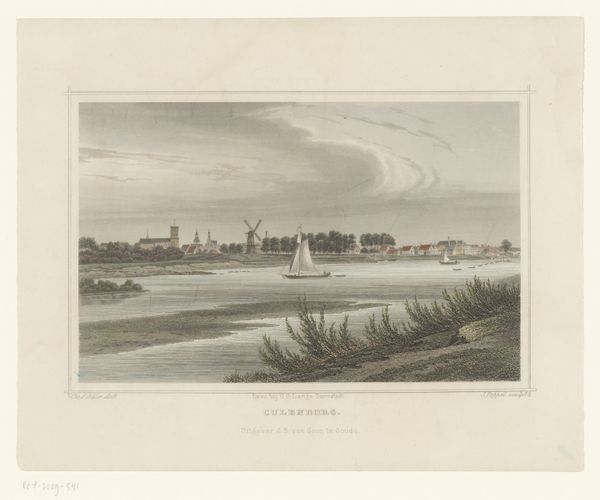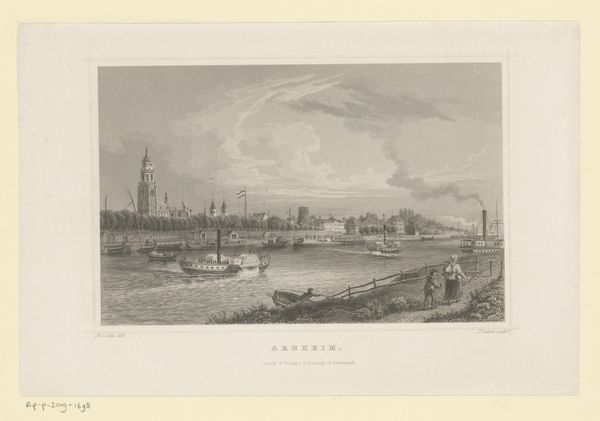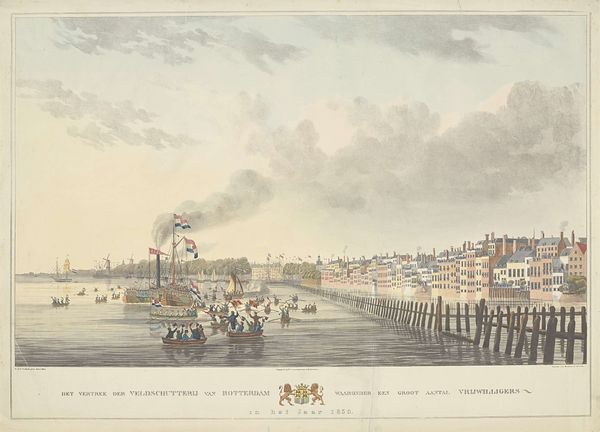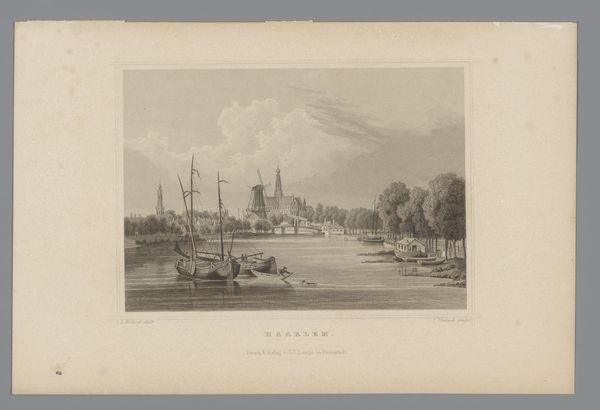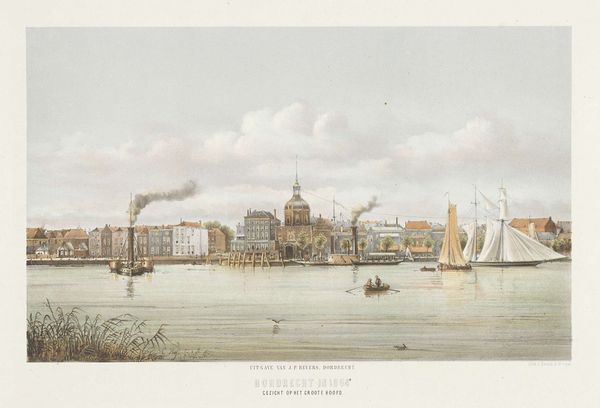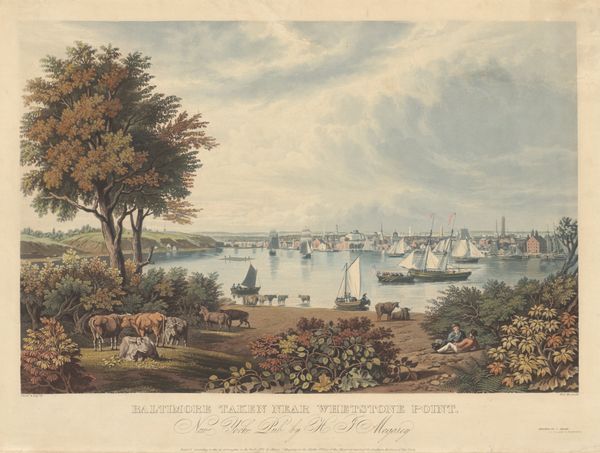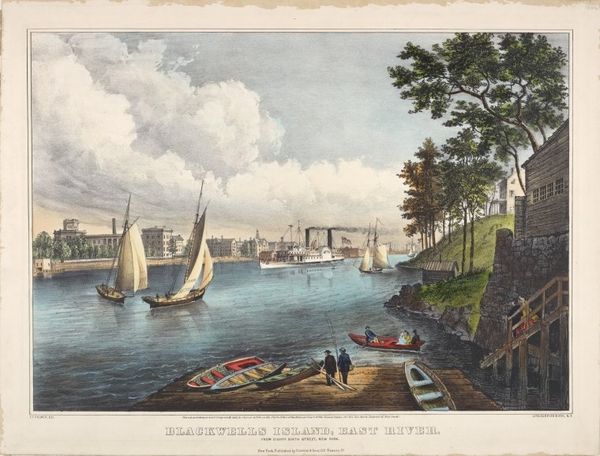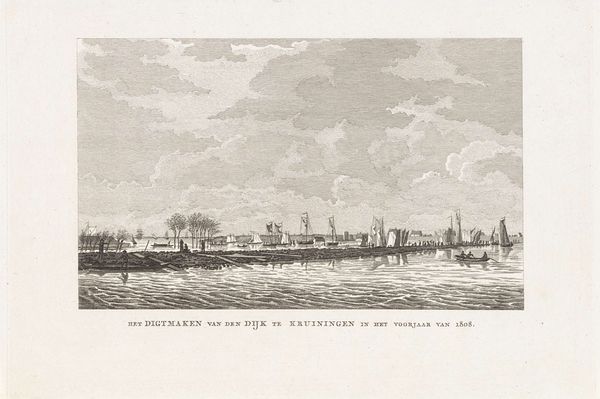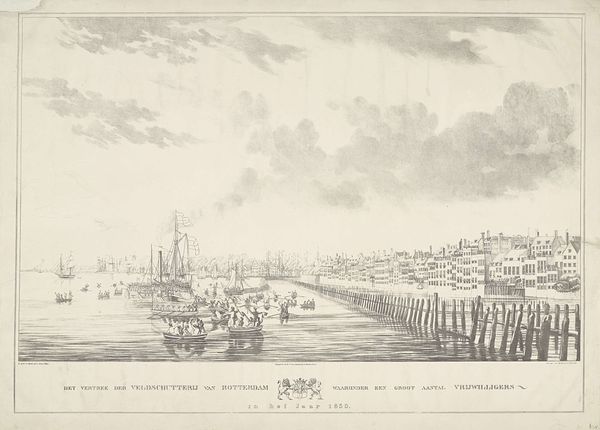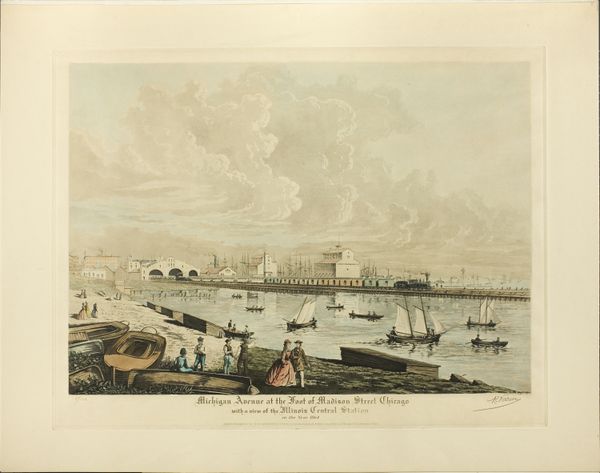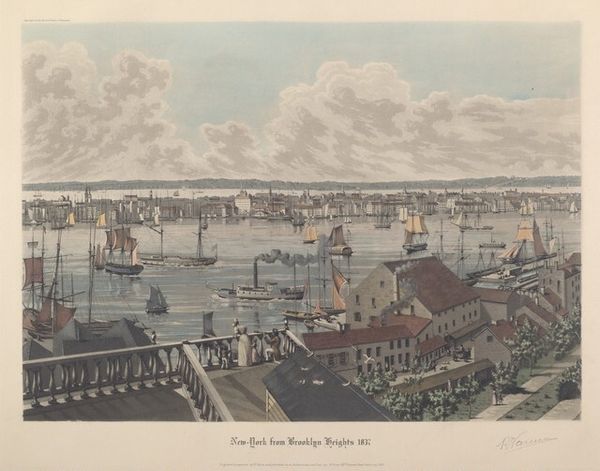
painting, watercolor
#
painting
#
landscape
#
watercolor
#
romanticism
#
cityscape
#
watercolour illustration
#
watercolor
Dimensions: height 250 mm, width 340 mm
Copyright: Rijks Museum: Open Domain
Editor: This watercolour painting, "View of Nijmegen from Lent" by Johannes Franciscus Christ, dating from around 1809 to 1845, has a wonderfully tranquil feel to it. The clouds and reflections in the water create a dreamlike atmosphere. What do you see in this piece, especially regarding the use of symbols within the cityscape? Curator: I’m struck by the symbolic interplay between the city and nature. The architecture, specifically the church tower dominating the skyline, reaches towards the heavens, representing spiritual aspiration. Conversely, the water, a universal symbol of the subconscious and fluidity, mirrors and softens the rigid structures of the town. Note the artist’s decision to depict everyday life on the shore, framing the imposing city. This interplay encourages contemplation about the psychological impact of urban life versus the freedom of nature. Editor: That's fascinating! I hadn't considered the water as representing the subconscious. Do the boats contribute to that symbolism? Curator: Indeed. The boats serve as vehicles for navigating both the physical and metaphorical waters. They signify journeys – literal voyages and also the journey of life, negotiating between our inner selves and the external world. The distant, somewhat idealized cityscape acts as a constant point of orientation, a destination both real and imagined. How do you interpret the bridge? Editor: The bridge appears as a symbol connecting two sides of the river, like communication between two different parts or ways of being. Perhaps a link between reality and idealized notions of ‘Nijmegen’? Curator: Precisely. Moreover, the artist provides the link with a small scale and subdued colours, further amplifying the powerful draw that memory has on our sense of 'home.' We seek what is 'over there.' Editor: That gives me a completely new appreciation for what's being communicated! The symbols work together to tell a nuanced story. Curator: Absolutely. Hopefully, you can begin to observe how we, too, ascribe symbols to our homes, cities and daily travels. We learn to identify continuity in the stream of life by giving objects cultural significance.
Comments
No comments
Be the first to comment and join the conversation on the ultimate creative platform.
